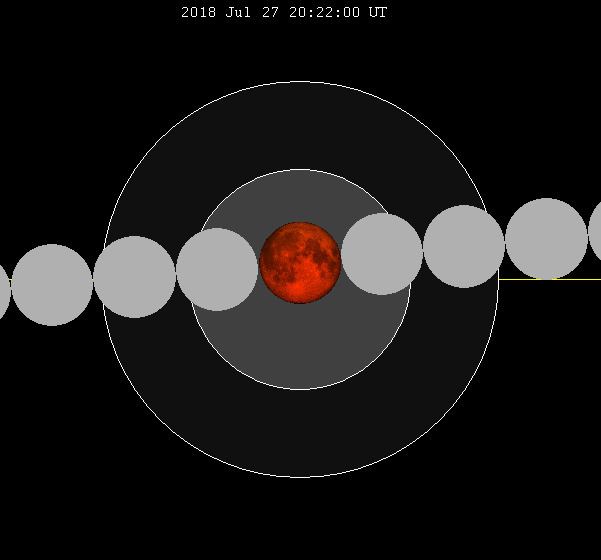 | ||
A total lunar eclipse will take place on July 27, 2018. The moon will pass through the center of the Earth's shadow. This will be the first central lunar eclipse since the June 15, 2011 lunar eclipse.
Contents
Visibility
It will be completely visible over Western Africa, and Central Asia, seen rising over South America, Eastern Africa, and Europe, and setting over Eastern Asia, and Australia.
Background
A lunar eclipse occurs when the Moon passes within Earth's umbra (shadow). As the eclipse begins, Earth's shadow first darkens the Moon slightly. Then, the shadow begins to "cover" part of the Moon, turning it a dark red-brown color (typically – the color can vary based on atmospheric conditions). The Moon appears to be reddish because of Rayleigh scattering (the same effect that causes sunsets to appear reddish) and the refraction of that light by Earth's atmosphere into its umbra.
The following simulation shows the approximate appearance of the Moon passing through Earth's shadow. The Moon's brightness is exaggerated within the umbral shadow. The northern portion of the Moon was closest to the center of the shadow, making it darkest, and most red in appearance.
Saros series
Lunar saros cycle series 129, repeating every 18 years and 11 days, has a total of 71 lunar eclipse events including 11 total lunar eclipses.
